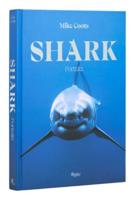
British Masters of the Albumen Print A Selection of Mid-Nineteenth Century Victorian Photography - Chicago Visual Library
Microfiche (01 Dec 1976)
Not available for sale
Includes delivery to the United States
Out of stock
Check stock
The most commonly used printing paper for photographic images during the nineteenth century was based on a prosaic medium-egg whites. The earlier salt paper print and calotype negative, while satisfying the need for inexpensive and multiplicable pictures, failed to yield precise detail. The collodion process increased image resolution on the negative, but the need for a smooth paper on which to print the finely detailed negatives became apparent. The answer came in 1850 when Louis Désiré Blanquart-Evrard revealed his process of adhering an emulsion to a paper base by using albumen from egg whites. Beginning in the 1850s the combination of wet collodion negatives and albumenized print paper became the major photographic method for the third quarter of the century. The technical and aesthetic role of the albumen print in the history of photography is the subject of Robert A. Sobieszek's essay and the basis for his selection of images in this Text/Fiche.
Book information
| ISBN: | 9780226691718 |
| Publisher: | UNIVERSITY OF CHICAGO PRESS |
| Imprint: | The University of Chicago Press |
| Pub date: | 01 Dec 1976 |
| DEWEY: | 770.28 |
| Language: | English |
| Number of pages: | 34 |
| Weight: | 170g |
| Height: | 257mm |
| Width: | 154mm |
| Spine width: | 6mm |











